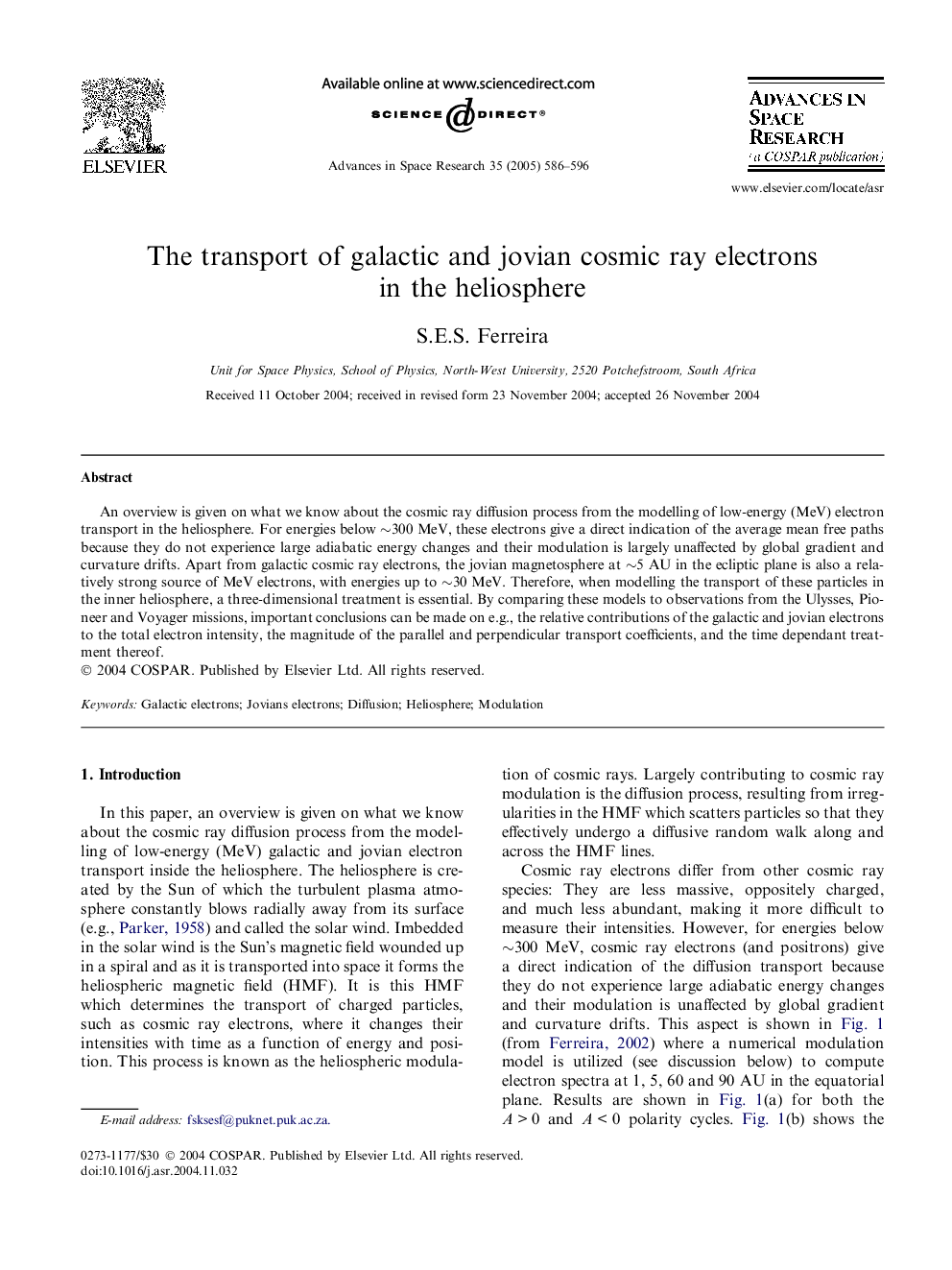| Article ID | Journal | Published Year | Pages | File Type |
|---|---|---|---|---|
| 10696286 | Advances in Space Research | 2005 | 11 Pages |
Abstract
An overview is given on what we know about the cosmic ray diffusion process from the modelling of low-energy (MeV) electron transport in the heliosphere. For energies below â¼300 MeV, these electrons give a direct indication of the average mean free paths because they do not experience large adiabatic energy changes and their modulation is largely unaffected by global gradient and curvature drifts. Apart from galactic cosmic ray electrons, the jovian magnetosphere at â¼5 AU in the ecliptic plane is also a relatively strong source of MeV electrons, with energies up to â¼30 MeV. Therefore, when modelling the transport of these particles in the inner heliosphere, a three-dimensional treatment is essential. By comparing these models to observations from the Ulysses, Pioneer and Voyager missions, important conclusions can be made on e.g., the relative contributions of the galactic and jovian electrons to the total electron intensity, the magnitude of the parallel and perpendicular transport coefficients, and the time dependant treatment thereof.
Related Topics
Physical Sciences and Engineering
Earth and Planetary Sciences
Space and Planetary Science
Authors
S.E.S. Ferreira,
